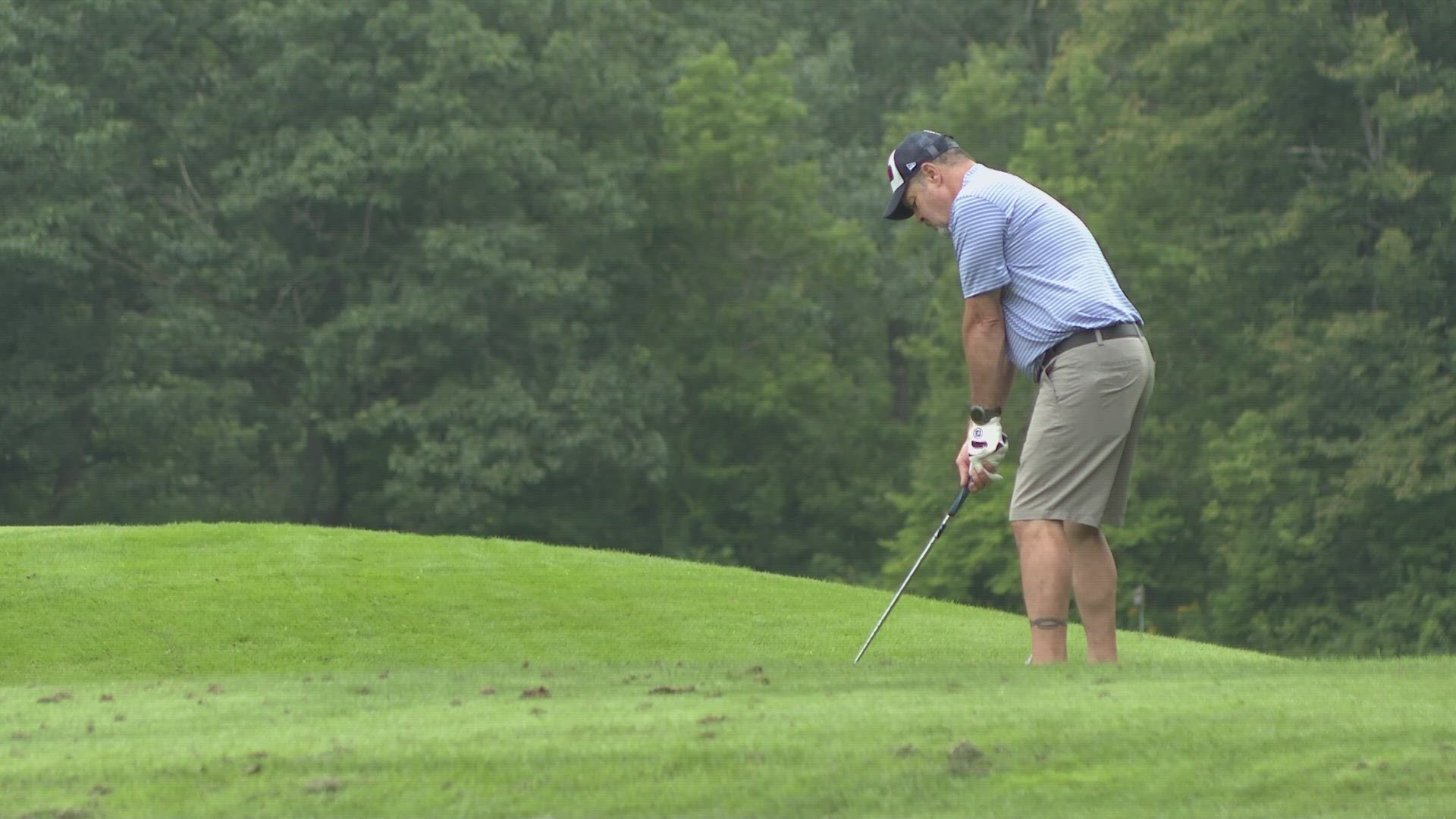PORTLAND, Maine — Golf is a unique sport, where players can get out in nature.
But golf courses can get a reputation for caring more about having green fairways than supporting the wilderness 20 feet away.
Matt Teneyck said as much, days after Riverside Golf Course earned recertification as a "cooperative sanctuary" from Audubon International.
Teneyck is the course superintendent, tending to everything outside the clubhouse. On an overcast day, he took us around the course, stopping near beehives placed in untamed grass to the right of the first fairway. He smiled and pointed nearby to one of the 72 bird boxes on the sprawling property that contains a full 18-hole north course, a separate nine-hole south course, and a three-hole practice facility.
"Golf courses used to get a bad name. You know what I mean," Teneyck smirked. "'They're horrible for the environment.' 'All they do is fertilize and spray chemicals and everything like that.' But, when we work together in harmony with nature, we can reach both ends of it."
Riverside is one of six courses in Maine so far to earn the sanctuary title, first achieving it in 2020. Bangor Municipal Golf Course is the only other fully public facility on the list.
Frank Lavardera helps certify the courses every three years for Audubon.
He said worthy courses excel in six criteria, including water conservation and quality, wildlife habitat management, and education programs.
"We want people to see the golf course beyond a golf course and look at it more as a wildlife preserve, a green space," Lavardera said.
In a far corner of the north course, Teneyck stopped next to a par-three and walked toward the middle of the hole and a large patch of wild grass with a stream running through it. Just then, a man teed off, his ball landing inches from the imposing thicket.
Teneyck politely showed the man his lie and watched the golfer's smirk slowly fade with each of three unsuccessful attempts to whack his Titleist over and onto the green.
The man swore under his breath as he conceded his ball to nature.
That predicament, Teneyck explained to us moments later, would not have snared a player in years past, as the grounds crew used to mow the entire space between tee box and green on that hole.
These days, they learned relatively small square footage would best serve nature left as is, much to the occasional wayward golfer's dismay.
"You don't always become the golfer's best friend, but we try and ... educate them on why we're doing it," Teneyck said.
You can't make everyone happy all the time. But the birds and the bees seemed happy. And besides, golf is just better in the woods.
Well, near the woods, at least.

